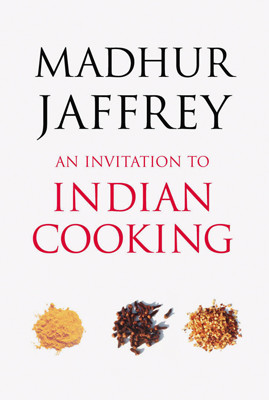Stars of India: the best chutneys and pickles for Diwali

Roula Khalaf, Editor of the FT, selects her favourite stories in this weekly newsletter.
Traditionally when families gather for Saturday’s Diwali celebrations, two foods will fuel the festivities: sweets and snacks. Grazing on samosa and pakora seems marginally healthier than gorging on the insanely sugary concoctions known as Indian sweets, so I tend to stick to the fried foods. But these are nothing without the chutneys that come with them. Sometimes, in fact, the chutneys are so good, I’ll eat the snack just to get another hit of the chutney.
Non-Indians are most likely to encounter these traditional chutneys in a restaurant. And Brigadiers, in the City of London, one of a number of Indian restaurants in the JKS group (others include Michelin-starred Gymkhana and Trishna), is among the best. For a chutney reinduction, I have come to meet Karam Sethi, who runs the group with his two siblings. Those who always begin an Indian meal the same way – with pappadums and chutney – would applaud the two trays that have just been set down between us. Among the chutneys are shrimp sorpotel (a Goan clove-infused relish), a tomato chutney with lemongrass and lime leaf, and the classic green chutney (with coriander, mint, ginger, garlic, green chilli, onion and spices). Mango chutney isn’t ordinarily included. I have asked for that specifically. Theirs looks like marmalade tempered with fenugreek, fennel, cumin and nigella seeds. It tastes sweet and comforting.

Is it surprising that I should have to request this most typical of chutneys? Well, Karam Sethi has a reputation for pushing boundaries. And there are many more interesting chutneys to showcase. Plus, mango chutney, particularly the jammy store-bought kind, isn’t something you routinely find in Indian kitchens. Not in my experience. There are exceptions. Karam’s brother Jyotin, the group’s CEO, loves the stuff and insists on having a jar of Geeta’s on the table at most family gatherings. But that habit is indulged rather than endorsed by certain other members of the family. As a concession to his brother and all mango-chutney fiends, Karam has developed a version for the restaurants that is actually modelled on Geeta’s. Why mess with a winner?


For Indians, chutneys are often more than mere accompaniments. They are core to the dish, whether that’s snacks, chaat (a street food served with puffed rice and sev) or kebabs. The sweet, tangy tamarind chutney that comes with chaat is precisely what makes it irresistible. Karam agonises over which chutney to serve with a dish. His green chutneys are a lesson in complementary flavours. The one that comes with pappadums is onion-heavy to open the palate up to the flavours to come; the one with the Wagyu seekh kebab anda kati roll (at Brigadiers) requires cumin and black salt to cut through the roll; and the one with the chicken and lamb kebabs includes yoghurt and brings a light herbaceous flavour.

Far less common in Indian restaurants are Indian pickles (achaar), which are matured in mustard oil or sesame oil if you’re from south India. The flavours are potent and not for everyone – though Indians love them for breakfast, lunch and dinner. “So many Indian meals are singular and vegetable focused, not the rich, creamy curries that most Brits think of,” says food writer Meera Sodha. “When it comes to kitchari, dhal or simple dishes like aloo paratha [potato-stuffed bread], they perk up whatever they are next to.”


Her current favourite is the Gujarati pickle methi keri, which contains raw green mango and fenugreek seeds. She calls it “a thinking Indian’s pickle” because its bitter flavour is hardly mainstream. When she makes hers, she leaves the fenugreek seeds to swell in oil for a few days, which causes them to lose some bitterness and become chewy. Part of the pleasure of making pickles for her is embracing family tradition – her grandmother taught her how – and she is particularly fond of a passage from Madhur Jaffrey’s An Invitation to Indian Cooking that illustrates how pickles infiltrate family lore. Jaffrey’s grandmother used to bring hers on the long car rides to the summer resorts Simla and Mussoorie. “When tossing and turning at the never-ending and ever-climbing hairpin bends made our taste buds turn green,” Jaffrey writes, “my grandmother… would say, ‘Aha,’ and produce a small brown crock filled with her lime pickles. They were sour and pungent and black with age. One tiny bite would make the mouth pucker at first, but ultimately leave it completely refreshed.”

How a family makes raita, the yoghurt-based accompaniment to biryani, among other dishes, can also tell a tale. Sodha’s beetroot raita (from a recipe in her book Fresh India) is partly inspired by a pachadi (a south Indian fresh pickle) she had in Kerala and partly by the beetroot borani she loves from north African/Spanish restaurant Moro in London. Hence the clove of garlic, not something you usually find in raita. Her mother’s summer raita reflects an even more unorthodox, improvisatory approach. It features Ski peach yoghurt, Granny Smith apples, chopped grapes, cheddar cheese, grated carrot, sultanas, nuts, cucumber and sometimes even tinned pineapple. “It’s a bit mental,” Sodha admits. “But she regularly cooked parties at home for 60 plus. I witnessed people’s reactions to her raitas and they always went down well.”
Comments